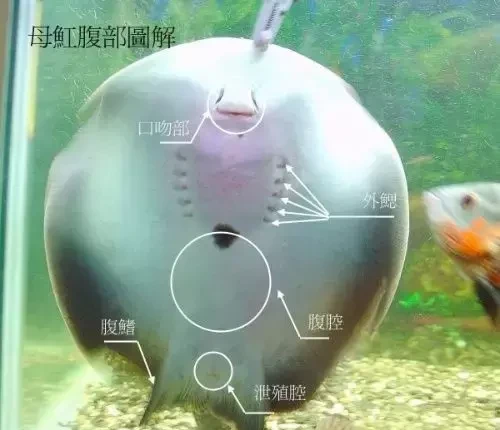It is often seen in the forum that there are aquarists who ask how to distinguish between the male and female of stingrays, and there are also enthusiastic aquarists who give detailed text explanations, which are nothing more than distinguishing from the fins and genitals, but most of them do not have picture descriptions. The original very detailed text explanation may seem very jerky and not very easy to understand. This is especially true for newbies, because I was like this at the time, I only knew whether there was a small JJ or not, but it was not easy to distinguish between being in that place and being yes or no. So today the little brother found a few pictures from the Internet to distinguish between the male and female of stingray, and learned with everyone!
(Disclaimer: The following pictures are from the Internet, the purpose is to popularize the knowledge of stingray, aquarists share, anyone who uses it in other ways, I am not jointly and severally liable.) )
The most direct way to distinguish between male and female is to see if there is a tailfly, that is, we often say that the little JJ, there are grandfathers, no is the mothers, haha ~ ~ please see the picture ~ ~
(1) Illustration of the female stingray abdomen

(2) Illustration of the abdomen of the male stingray
(3) Close-up of the tail
(4) Close-up of the genitals of male ray juveniles
(5) Close-up of the overall appearance
(6) Close-up of the eyes and gill holes
A brief introduction to the various organs of stingray
Body size: The size of stingray is generally calculated by the diameter of the body, and the body size of freshwater stingray can be divided into two types: round and peach.
Eyes: Can be divided into two types: big-eye stingray and small-eye stingray: big-eyed stingray - the eyes are larger and more prominent. Small-eye stingrays – the proportion of eyes is relatively small. The eyes of stingrays are affected by light, and the pupil size can be adjusted by itself. Strong light - the pupil shrinks to a U-shape, weak light - the pupil dilates into a round shape.
Gill holes: Respiratory organs that use the open threshold of the gill hole cover to introduce fresh water into the gills.
Outer gills: Acting in the same way as gill holes, the most common gills in freshwater gills are 5 pairs.
Pectoral Fin: Evolves into a disc and provides forward momentum when agitated into waves.
Ventral Fin: Auxiliary pectoral fin.
Caudal Fin: Finned fish do not rely on the caudal fin to advance, providing only steering, degenerating into a fairly small proportion.
Tailpartite (male ray): Stingray breeding is to take the way of in vivo insemination, male tail fin specialization into 2 tailparts, juvenile male tail crosser is not very obvious, into a thin needle, as it grows, the tailparts become longer and thicker and curled.
Cloaca (female stingray): As the name suggests, excretion and reproduction are through this organ.
Abdominal cavity: can be observed for normal stingray feeding.
Spiny spines: small spines protruding from the tail stalk, and the growth status can be divided into single row of thorns and multiple rows of thorns.
Tail spines: Toxic, with small serrated edges, new spines will grow 3 to 4 times a year to replace the old thorns as the stingray grows.